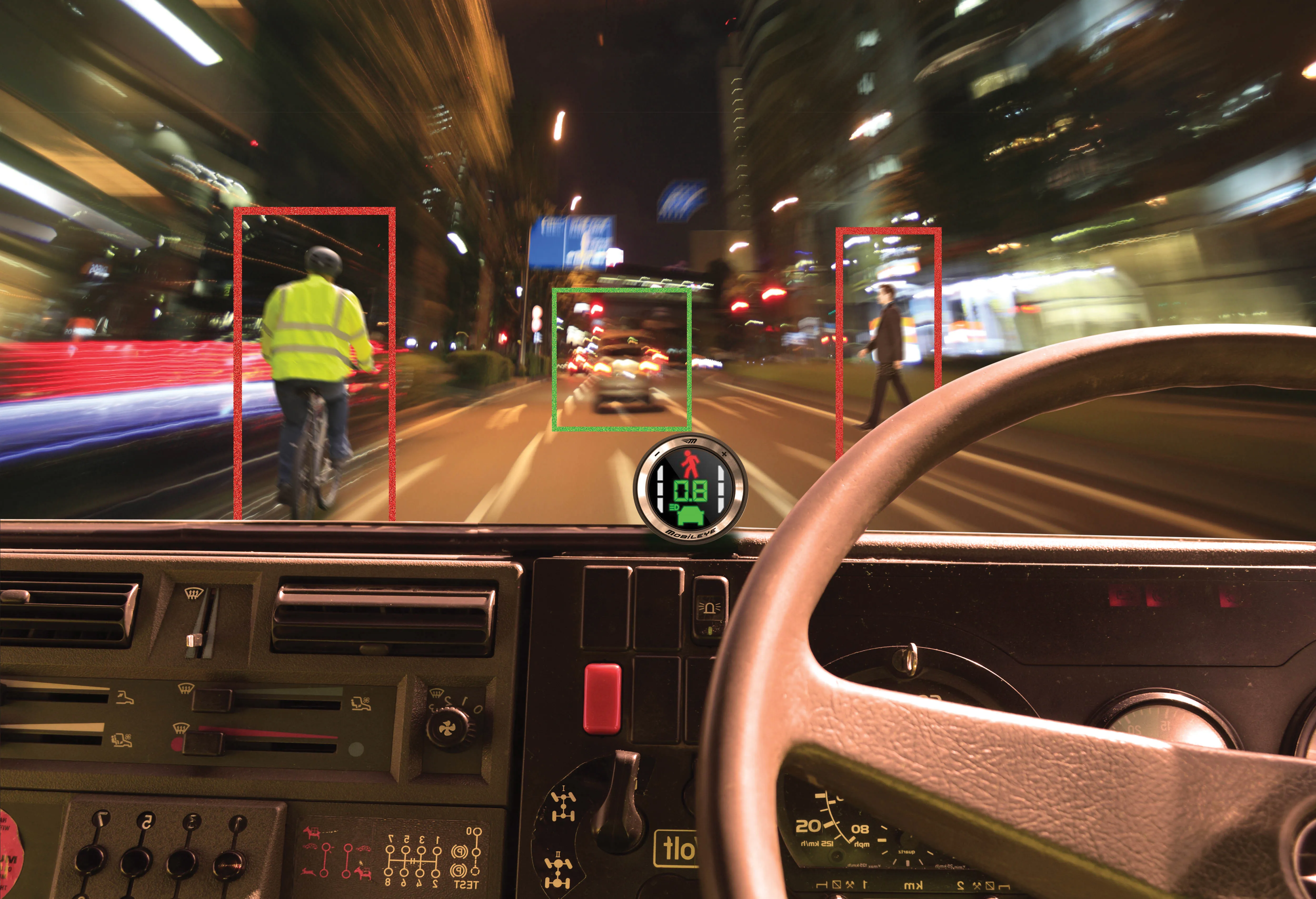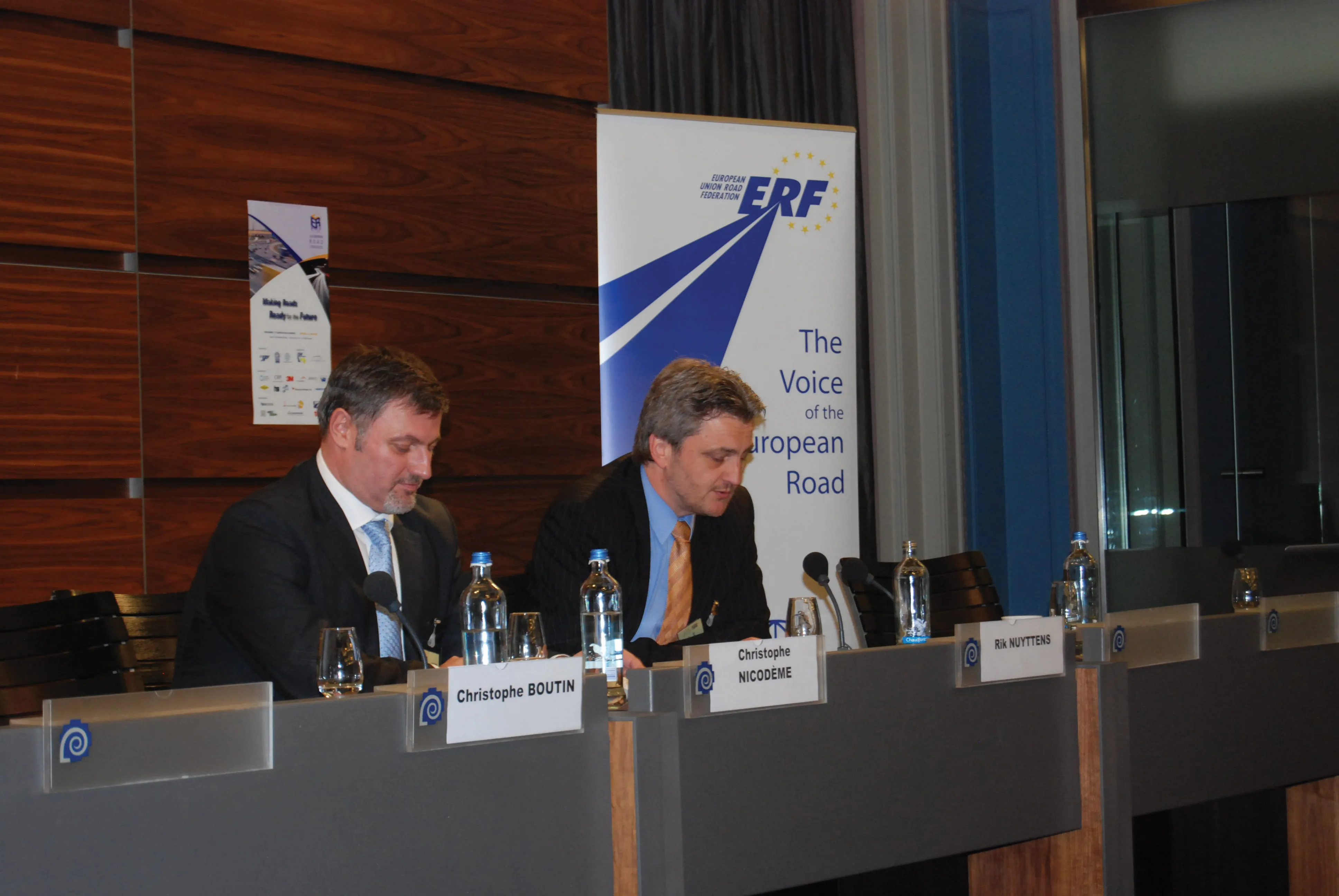Last week, the Flemish press witnessed a demonstration in Lommel, Belgium, presenting how Traficon technology can collaborate with so-called smart vehicles. The demonstration was part of the Vision project of Flanders’ Drive, the research centre for the automotive industry, which collaborates with a consortium of companies to research and test vehicle-to-infrastructure communication. In the successful demonstration a Traficon C-Walk pedestrian detector was combined with a smart vehicle, which was equipped w
April 25, 2012
Read time: 2 mins
Last week, the Flemish press witnessed a demonstration in Lommel, Belgium, presenting how 348 Traficon technology can collaborate with so-called smart vehicles. The demonstration was part of the Vision project of Flanders’ Drive, the research centre for the automotive industry, which collaborates with a consortium of companies to research and test vehicle-to-infrastructure communication.
In the successful demonstration a Traficon C-Walk pedestrian detector was combined with a smart vehicle, which was equipped with a camera detection system. By communicating with Traficon technology, the vehicle can spot vulnerable road users that are far away or difficult to see and can warn the driver of possible dangers.
“Together with Flanders’ Drive and its project partners, we want to learn more about vehicle-to-infrastructure-communication,” comments Michael Deruytter, product manager at Traficon and collaborator at the Flanders’ Drive project. “At the same time, we want to contribute actively to the research on this innovative technology. Thanks to this project, Traficon also has the possibility to test its pedestrian monitoring products in a real-life environment.”
With this demonstration, Flanders’ Drive wanted to announce the first results of the Vision project. Among other things, the consortium already achieved a first version of the application software and a prototype system for communication between the vehicle and the infrastructure detection systems. Next steps have been defined as well, for example the extension of the system towards detection of cyclists at intersections and roundabouts.
In the successful demonstration a Traficon C-Walk pedestrian detector was combined with a smart vehicle, which was equipped with a camera detection system. By communicating with Traficon technology, the vehicle can spot vulnerable road users that are far away or difficult to see and can warn the driver of possible dangers.
“Together with Flanders’ Drive and its project partners, we want to learn more about vehicle-to-infrastructure-communication,” comments Michael Deruytter, product manager at Traficon and collaborator at the Flanders’ Drive project. “At the same time, we want to contribute actively to the research on this innovative technology. Thanks to this project, Traficon also has the possibility to test its pedestrian monitoring products in a real-life environment.”
With this demonstration, Flanders’ Drive wanted to announce the first results of the Vision project. Among other things, the consortium already achieved a first version of the application software and a prototype system for communication between the vehicle and the infrastructure detection systems. Next steps have been defined as well, for example the extension of the system towards detection of cyclists at intersections and roundabouts.







